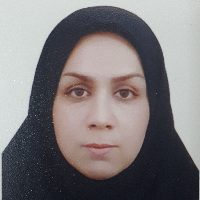Temporal-spatial assessment of groundwater quality in Zahedan County for drinking and agricultural uses
The rainfall decrease and limited water resources in arid and semi-arid regions such as the Zahedan region caused the groundwater resources to need more attention in these areas. Moreover, the increase in the population in Zahedan Country and the lack of a suitable system for collecting wastewater in this area have made the pollution of underground water inevitable. So that, the excessive extraction of underground water resources and successive droughts on the other hand have caused a decrease in the underground water level in this region. Therefore, the present study was carried out with the aim of time-spatial monitoring of underground water quality in Zahedan County.
The aim of this study was to monitor the temporal-spatial quality of groundwater quality in Zahedan City in four stages. Determining the geographical coordinates of sampling wells, calculating the water quality index (WQI), and Wilcox index, comparing the interpolation methods in ArcGIS 10.8 software to prepare the spatial map of the WQI and comparing the spatial variations of the WQI. This research was conducted in two time periods 2010-2013 and 2014-2017. To investigate the temporal changes in water quality parameters, annual statistics of 90 wells and aqueducts with continuous statistics were used. Then, WQI and Wilcox’s indices were calculated for drinking and agricultural uses, respectively. One of the most practical methods is WQI, which indicates the degree of its suitability for various uses, including drinking. This index is usually obtained from the values of general water parameters including dissolved oxygen, acidity, hardness, soluble solids, temperature, turbidity, nitrate, nitrite, and some basic ions. This index combines different water quality parameters to provide a numerical value that can be used for spatial comparisons. Besides, Wilcox's classification is one of the most important index in the field of determining the quality of agricultural water, which is calculated based on two parameters of electrical conductivity (EC) and sodium absorption ratio (SAR) as the risk of alkalinity.
The lowest and highest WQI levels were 30.1 and 674.0, respectively in the period 2010-2017. WQI time changes during the study period showed that the WQI is not significantly different between the first (2010-2013) and the second (2014-2017) periods. According to this index, in the first period, 7.9 % of the studied wells were in good condition, 5.6 % in bad condition, 13.5 % in very bad condition, and 73 % undrinkable in terms of drinking water quality. In the second period, 6.7 % of the studied wells were in good condition, 6.3 % in bad condition, 13.3 % in very bad condition, and 73.3 % undrinkable in terms of drinking water quality. In both time periods, the quality of none of the wells in terms of drinking was not in the high class. The results of descriptive statistics showed that the mean parameters of SO42-, Cl-, EC, TH, TDS, and HCO3- were two intervals higher than the standard. According to the results of the Pearson correlation test, there is a negative significant relationship between the pH and other parameters. The pH has the most negative significant relationship with TH. TDS and EC variables have the highest positive and significant relationship. This lack of impact can be attributed to the range of very low pH changes in groundwater samples in the two periods. There is also a significant negative relationship between pH and other parameters. The pH has the most negative and significant relationship with potassium. Moreover, according to the Wilcox index, in the period of 2010-2013, 87 % of the studied stations are in the S4C2, S3C3, S3C4, and S4C4 classes, which are unsuitable for agriculture and 12 % were in the C3S3 class, which by applying the necessary measures can be used for agriculture. Likewise, in the period 2014-2017, 91 % of the sampled stations are located in very salty and unsuitable for agriculture, and 8 % of wells. It is possible that the high extraction of underground water and the drop in the water level in the Zahedan region have caused the EC of water to increase. Also, drought can play a role as an aggravating factor in the change in water quality. The results of the Pearson correlation test showed that there is a significant negative relationship between pH and other parameters. Since in the comparison of various interpolation methods based on RMS and R2 for the WQI, the zoning map was drawn based on the kriging method due to its lowest RMS and highest R2.
Due to the high salinity of water, the study wells are not used for drinking and agriculture purposes but they can be used in ordinary applications such as washing. Besides, considering the quality characteristics of groundwater in the Zahedan region, it can be acknowledged that proper water management in this region is very important.
- حق عضویت دریافتی صرف حمایت از نشریات عضو و نگهداری، تکمیل و توسعه مگیران میشود.
- پرداخت حق اشتراک و دانلود مقالات اجازه بازنشر آن در سایر رسانههای چاپی و دیجیتال را به کاربر نمیدهد.


